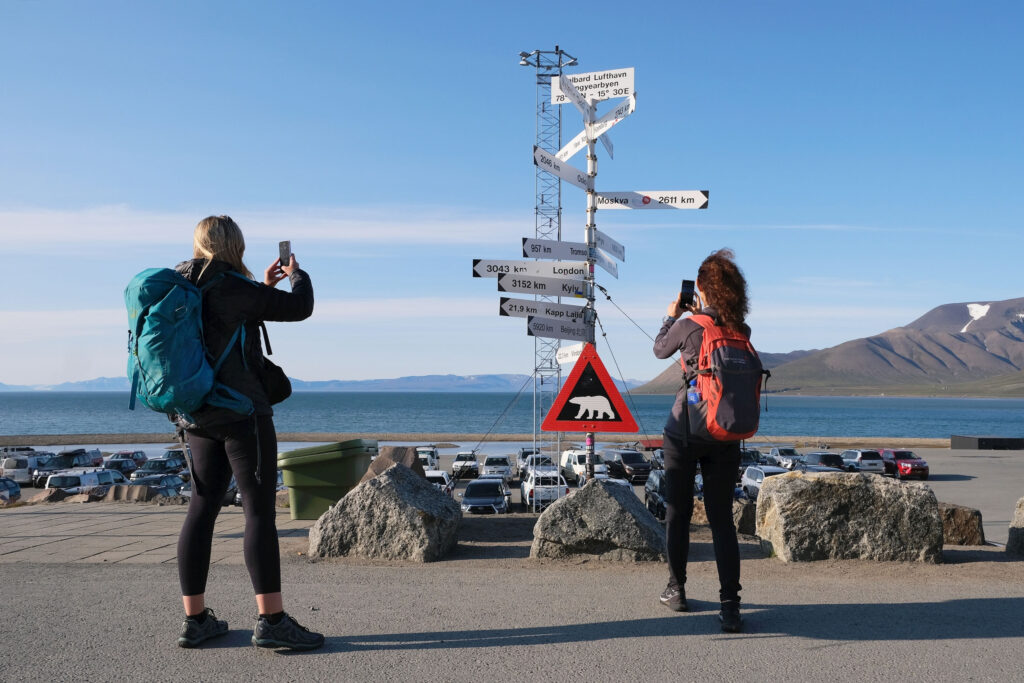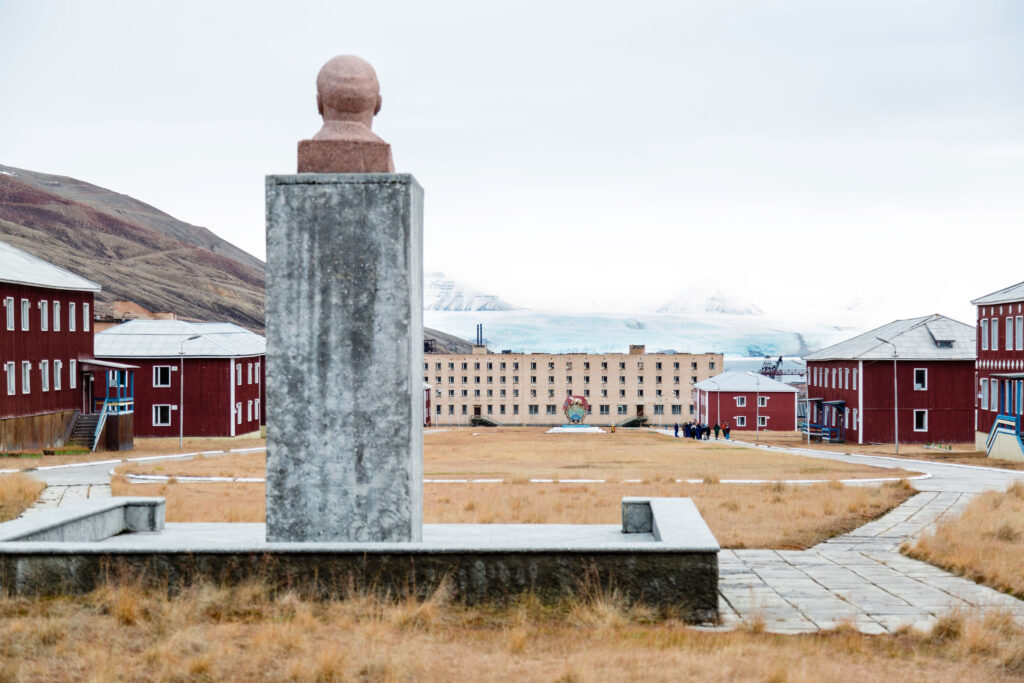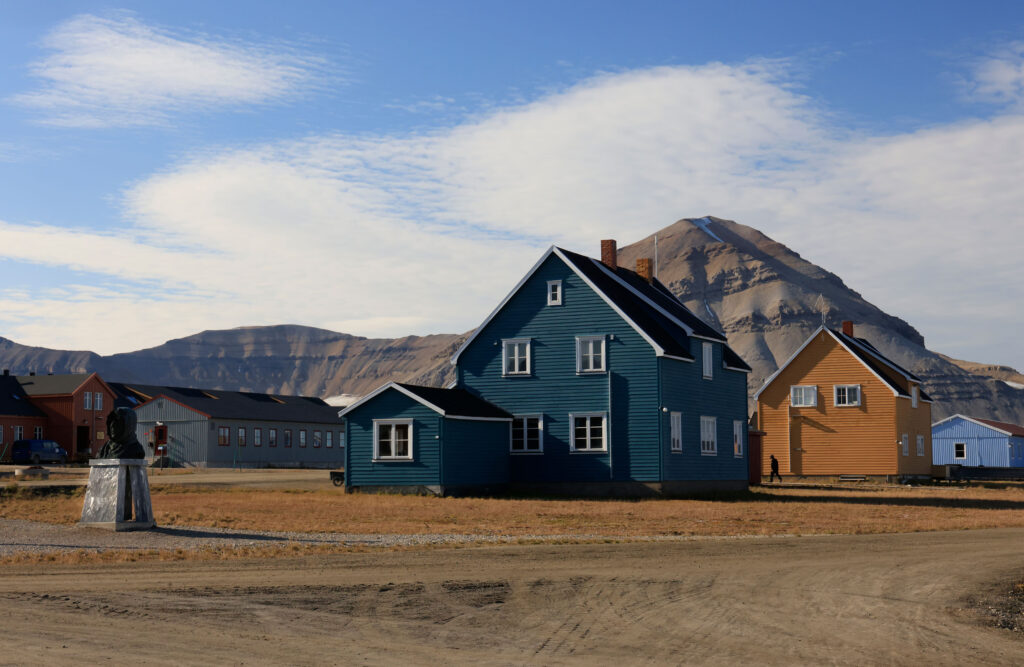Table Of Contents
A quick overview:
- The official language of Svalbard is Norwegian.
- English is widely spoken and understood throughout the Svalbard archipelago.
- Most tours and expedition cruises to Svalbard are English-speaking.
- In the Russian settlements of Pyramiden and Barentsberg, the language spoken is Russian.
- Because Svalbard has such an international presence through tourism and research stations, there are many languages spoken in Svalbard, including German, Filipino, Thai, and Polish.
- Svalbard once had its own language called Russenorsk that no longer exists.
Hei der! Welcome to this article on the languages spoken in Svalbard. As you plan your trip, you may have wondered what languages are spoken in Svalbard. In this article, I examine the languages spoken in Svalbard.
Located in the Arctic Ocean between mainland Norway and the North Pole, Svalbard, believe it or not, is a linguistic melting pot. This remote place might seem like an unlikely hotbed of language complexity, but the reality is more interesting than you think.

The Official Language Of Svalbard is Norwegian
Officially, Norwegian is the language of Svalbard. The mainly Norwegian-speaking settlements include Longyearbyen and Ny Alesund. The predominant language spoken in Svalbard is Norwegian, accounting for 80% of the population.
As a territory under Norwegian sovereignty, Svalbard has been under Norwegian rule since the inception of the Svalbard Treaty in 1920. It makes sense that Norwegian is the language of government, official documents and formal communication.
The Norwegian Polar Institute, the Governor of Svalbard (Sysselmannen) and other official bodies do their business in Norwegian. The Svalbardposten is the local newspaper that comes out twice a week in Norwegian. Even the polar bear warning sign is in Norwegian, although it’s easy to understand what it means.
But that’s not the whole story.
English Is Widely Spoken In Svalbard
If you don’t speak Norwegian and you are travelling to Svalbard, don’t worry because English is widely spoken and understood. The majority of the tours in Svalbard are English-speaking so that you will be in good hands. All the Svalbard cruises and tours offered by Polar Escapes are English-speaking unless otherwise stated.
Despite Norwegian being the official language, English has become the de facto lingua franca of Svalbard, especially in Longyearbyen, the largest settlement. This reflects the international character of the community and the practical needs of daily life.
Why English Rules Daily Life
Several factors have contributed to English becoming the common language:
International Workforce: Svalbard attracts researchers, miners, guides and other professionals from all over the world. The University Centre in Svalbard (UNIS) teaches most of its courses in English, with students and faculty from dozens of countries.
Tourism Industry: The growing tourism sector relies heavily on English-speaking guides and operators to serve international visitors exploring the Arctic wilderness.
Practical Communication: With residents speaking everything from Russian and Thai to German and French, English is the most useful language for everyday conversations.
Other Languages Of Svalbard
The true language landscape of Svalbard is surprisingly diverse for such a small population. Walk through Longyearbyen any day, and you might hear:
- Russian: Historical significance due to the Soviet mining in Barentsburg and Pyramiden
- Thai: Around 10% of the population in Svalbard is Thai, contributing to the linguistic diversity.
- German: Among researchers and tourists
- Polish: Through various work programs and research initiatives
- Dutch, French, Italian and others: Representing the international scientific community
Historical Linguistic Context
Svalbard’s linguistic history is complex. The archipelago was first exploited by whalers in the 17th century. The Dutch established Smeerenberg in 1619, so Dutch was the first language spoken in Svalbard.
Svalbard was left uninhabited until the early 20th century, when various nations established mining and research operations. This created a multilingual environment from early on.
The Russian presence, especially during the Soviet era, left a lasting linguistic legacy. Barentsburg, still operated by Russia’s Trust Arktikugol, is a Russian-speaking enclave where Cyrillic signs and Russian conversations are the norm. Today, Russian is the second most spoken language in Svalbard, used by about 13% of the inhabitants.
Pyramiden was established by the Swedes in 1910 and later taken over by the Soviet Union.

Former and Extinct Languages
Did you know Svalbard once had its language known as Russenorsk? Russenorsk was a pidgin language combining elements of Russian and Norwegian previously spoken in Svalbard. It was a basic language adapted by traders and whalers in the Arctic to communicate with each other.
The history of Russenorsk mainly spans the 18th and 19th centuries, and it is now extinct. It is believed the last trade that occurred in Russenorsk was in 1923.
The Case of Ny-Ålesund

Ny-Ålesund research station is perhaps the most extreme example of Svalbard’s linguistic diversity. As an international research base with scientists from many countries, English is essential for collaboration. But you’ll also hear Norwegian, German, French, Italian, Korean, Chinese and many other languages as researchers from different nations work on Arctic research.
Language in Education
The Longyearbyen School faces unique challenges in this multilingual environment. While instruction is mainly in Norwegian, the school serves children from many linguistic backgrounds. English is often used as a supplementary language of instruction, and the school has developed special programs to help children who do not speak Norwegian integrate.
Challenges and Opportunities
Living in a multilingual community has its challenges and opportunities:
Challenges: Official paperwork and legal matters must be done in Norwegian, creating barriers for non-Norwegian speakers. Emergency services and medical care require language considerations.
Opportunities: Many businesses operate in bilingual or multilingual environments. Signs are often in both Norwegian and English. The community has developed informal translation networks to help residents navigate official processes.
The Future of Language in Svalbard
Several trends are shaping Svalbard’s linguistic future:
Climate Research Growth: As Arctic research grows due to climate change, the international scientific community will continue to grow, and English will remain the working language.
Tourism Development: Sustainable tourism development will bring more linguistic diversity to the archipelago.
Norwegian Policy: Norway will continue to require the Norwegian language for specific positions and long-term residence, keeping the official language important.
Living the Multilingual Reality
For residents of Svalbard, navigating this linguistic landscape requires flexibility and creativity. Many inhabitants speak three or more languages fluently. Children growing up in Longyearbyen often become natural polyglots, switching between languages depending on the situation. Local businesses have adapted by hiring multilingual staff and producing materials in multiple languages. The local newspaper, Svalbardposten, is in Norwegian but often covers stories relevant to the whole international community.
Conclusion: A Language Laboratory in the Arctic
Svalbard feels like a sociolinguistic experiment in one of the most remote places on earth. While Norwegian is the official language, English is the bridge between a very diverse international community.
For visitors and potential residents, understanding this language reality is key. Come with English for daily life, but don’t be surprised to hear a dozen other languages during your stay in this Arctic hub.
Whether you’re a researcher studying polar bears, a tourist looking for the Northern Lights or someone drawn to life at the edge of the world, Svalbard’s multilingual community will surprise and delight you with its many voices across the Arctic tundra.
Explore Svalbard With Polar Escapes
Here at Polar Escapes, we are experts in travelling to Svalbard. Would you like to experience Svalbard yourself and see a polar bear or a Svalbard reindeer in the wild? As a next step, why not browse our curated selection of Svalbard Cruises and Tours?
If you need firsthand advice to help you plan your trip, please get in touch with us.
Most emails are boring.
Ours are cool.




